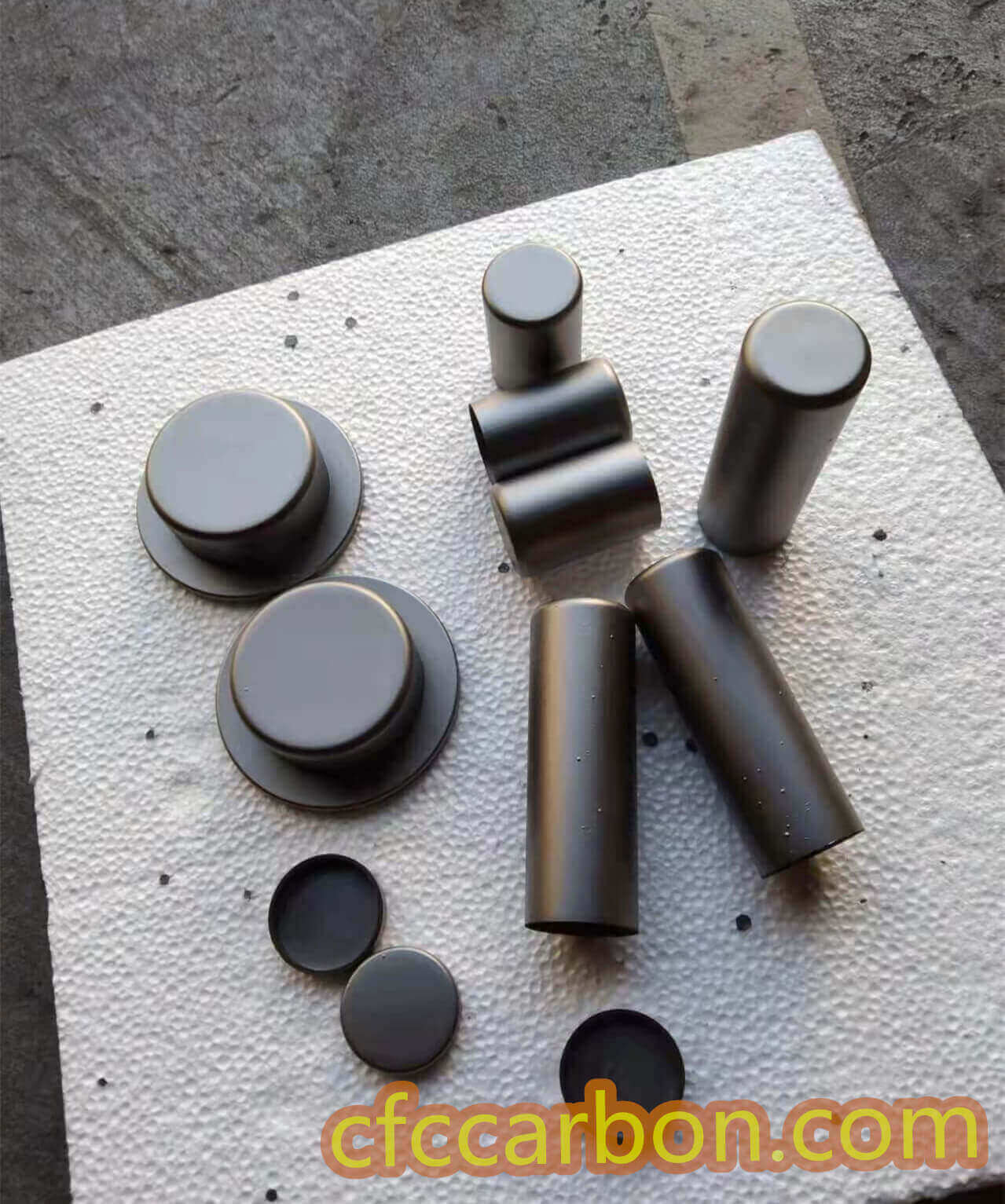The Forms of Carbon (1): Diamond – A Comprehensive Guide to Types, Production, and Applications
1. What Are the Forms of Carbon? Diamond as a Key Allotrope
Carbon exhibits diverse structural forms, known as allotropes, with diamond standing out as one of the most remarkable. Diamond is a

PG sheet-pyrolytic graphite plate disc crucible pipe tube (4)
crystalline form of carbon where each atom is covalently bonded to four others in a tetrahedral structure, resulting in unparalleled hardness (Mohs scale 10) and thermal conductivity (22 W/cm·K)47. Unlike graphite, another carbon allotrope, diamond is electrically insulating due to its rigid sp³ hybridization10. Its applications span gemstones, industrial tools, and cutting-edge technologies like semiconductors and quantum computing58.
2. Production Methods and Product Classification
Diamond manufacturing has evolved significantly, with synthetic methods now dominating industrial use:
Natural Diamonds
Mined from kimberlite pipes or alluvial deposits, natural diamonds form under extreme mantle conditions (1.7 GPa, 900–1,300°C)11. Only ~20% of mined diamonds are gem-quality; the rest are graded for industrial use, such as cutting tools or abrasives4. Modern X-ray sorting ensures efficient separation, though natural diamonds are increasingly replaced by cost-effective synthetic alternatives8.
High-Pressure High-Temperature (HPHT) Synthetic Diamonds
Using metal catalysts (e.g., iron, nickel), HPHT synthesis replicates natural conditions to grow diamonds from graphite. This method produces single crystals up to 8 mm in size, ideal for precision tools like drill bits and grinding wheels8. HPHT diamonds are prized for consistency and affordability, capturing 80% of the industrial diamond market8.
Polycrystalline Diamond (PCD)
PCD combines micron-sized diamond particles with a metal binder (e.g., cobalt) under high pressure. This composite enhances toughness compared to single crystals, making it suitable for machining abrasive materials like carbon-fiber composites. However, PCD’s temperature limit (700°C) and brittleness under impact remain challenges8.
Chemical Vapor Deposition (CVD) Diamond
CVD diamond grows layer-by-layer on substrates using methane and hydrogen plasma. This method produces high-purity, thermally stable coatings (up to 2,200°C) for applications in optics, electronics, and wear-resistant tools58. CVD diamond’s columnar structure enables custom shapes, such as hollow fibers for aerospace components6.
Diamond-Like Carbon (DLC)
DLC, a non-crystalline carbon film, mimics diamond’s hardness but is deposited at low temperatures via physical vapor deposition. Used in automotive coatings and biomedical devices, DLC offers wear resistance but degrades above 250°C8.
3. Performance Characteristics and Industrial Applications
| Type | Key Properties | Applications |
|---|---|---|
| Natural Diamond | High hardness, gem-quality clarity | Jewelry, precision cutting tools |
| HPHT Synthetic | Uniformity, cost efficiency | Drill bits, grinding wheels |
| PCD | Enhanced toughness, wear resistance | Machining CFRP, tungsten carbide |
| CVD Diamond | Thermal stability, optical transparency | Semiconductor substrates, laser windows |
| DLC | Low friction, biocompatibility | Engine coatings, surgical instruments |
Technical Metrics
-
Hardness: CVD diamond > HPHT > Natural > PCD > DLC
-
Thermal Conductivity: CVD (20–22 W/cm·K) > Natural (15–20 W/cm·K)5
-
Price Range: Natural (3,000–5,000/carat for gems) > CVD (500–1,000/carat) > HPHT (100–300/carat)68.
4. Innovations and Future Trends
-
Semiconductor Breakthroughs: Diamond’s ultra-wide bandgap (5.47 eV) and high electron mobility position it as a next-gen material for high-power electronics, with prototypes achieving 10 kV breakdown voltages5.
-
Quantum Technologies: Synthetic diamonds with nitrogen-vacancy centers enable advances in quantum sensing and computing8.
-
Sustainable Manufacturing: Companies like CFC Carbon Co. leverage advanced CVD techniques to produce eco-friendly diamond-coated components for aerospace and energy systems6.
5. Why Choose Synthetic Diamonds?
Synthetic diamonds offer superior control over size, purity, and functionality. For instance, CFC Carbon’s 3D/4D carbon composites integrate diamond coatings for extreme environments, combining lightweight design with unmatched durability6. Industrial users benefit from:
-
Cost Savings: Synthetic diamonds reduce reliance on scarce natural resources.
-
Customization: Tailored shapes (plates, fibers) and doping (boron, nitrogen) for specific needs.
-
Performance: CVD diamond’s thermal stability outperforms traditional materials in high-temperature reactors and electronic heat sinks58.
Conclusion
From ancient gemstones to futuristic semiconductors, diamond continues to redefine technological boundaries. As synthetic methods advance, industries increasingly adopt diamond-based solutions for their unmatched properties. Explore CFC Carbon’s cutting-edge diamond products here to discover how this ultimate material can transform your applications.
related news /articles:
The carbon element and its various forms
Processing methods of different graphite ore